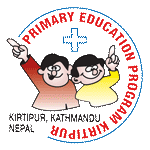Für weitere Details
bitte klicken
Für weitere Details
bitte klicken
Für weitere Details
bitte klicken
Für weitere Details
bitte klicken
|
|
|
|
|
|
Für weitere Details |
Für weitere Details |
Für weitere Details |
Für weitere Details |
|
Scholarship Programs for most deprived
children |
|
Concept: |
 |
 |
 |
 |
|
Primary Education Program |
Study Support Program |
Annual Scholarship |
Higher Secondary |
|
Visitors to Nepal encounter poverty at every turn, especially in the
remote rural areas. It cannot be overlooked that despite the busy
atmosphere in the capital Kathmandu and close to tourist attractions,
the country's average annual per capita income in Nepal is only around
US $ 1,000, adjusted for purchasing power around US $ 3,000 (as of
2018). Many visitors to the country are then inclined to help
spontaneously with a little money at short notice, without being aware
of the sustainability of their support.
The best help we can give to the
children of Nepal
Therefore
From the outset, the private aid initiative was based on a concept that dispensed with a widespread, but ultimately unsustainable and inefficient distribution of available financial aid. Instead, the vision of the founder was and is to support a selected and limited group of boys and girls in the long term with targeted and, above all, reliable support from the 1st grade of elementary school to a university degree, thus creating a group of qualified young people who can serve their country particularly efficiently in their future professional activities. The scholarship covers all essential costs for attending school. We relieve the families of the financial burden of school fees, school uniforms, books, writing utensils, etc., and enable the children to have a financially worry-free education, which in many cases would otherwise not have been possible to start or complete in the first place. |
|
|
|
|
|
|
|
|
|
Bald in die Grundschule oder. . . |
. . . Kinderarbeit in der Ziegelei?? |
Große Freude mit kleinen Dingen! |
|
Chronology of the scholarship-programs: |
| April 2023 |
Higher Seondary Scholarship Program, Start in 2023 |
|
As a further supplement to the long-term funding in PEP and SSP, since April 2023 we have been supporting 30 qualified graduates of the SEE exam (intermediate school leaving certificate, grade 10) from particularly precarious families who cannot afford to continue attending school until they are ready to study (grade 12). . These 30 girls and boys will each be supported for another 2 years in our “Higher Secondary Scholarship Program”. |
|
|
Annual Scholarship Program 2023 |
|
|
9 students leave the support program according to the rules. The scholarships are awarded to selected younger students from grades 1-5 (including preschool) |
|
|
March 2022 |
Annual Scholarship Program |
|
In addition
to the long-term funding in PEP and SSP, we launched another "annual
scholarship program" (Annual Scholarship Program ASP) in February 2022
to support up to 60 primary school children (including preschool) from
families with particularly precarious ones. |
|
|
Study Support Programm |
|
|
Interim result February
2022: |
|
|
Primary Education Program |
|
|
8 students are still
in secondary classes XI and XII and are therefore still supported in the
PEP program. |
|
|
2021 |
In the school year 2077 BS (April 2020 AD to March 2021 AD) and 2078 BS (April 2021 AD to March 2022 AD), the scholarship funding has mostly come to a standstill. For almost a full year, regular classes and, above all, the intermediate and final exams at schools, colleges, etc. have largely been cancelled. Isolated online lessons, especially for the secondary levels of state schools, were only able to compensate to a small extent, especially with regard to the poor network quality and availability of means of communication (computers, smartphones, tablets). |
|
March2020
/April 2020 |
Study Support Programm |
|
38 girls und boys are supported in SSP |
|
|
Primary Education Programm |
|
|
8 PEP students are
taking their SEE exam with a delay due to the pandemic. The rest switch
to the Higher Secondary Classes XI-XII. |
|
|
March 2019 |
Study Support Programm |
|
From 2019, after
successfully completing the SLC exam after class 12 (so-called +2 exam),
we will enable qualified PEP graduates to study at a university or
college of their choice up to a bachelor's degree with our study support
program. One of the girls
starts training as a nurse. |
|
|
Primary Education Programm |
|
|
19 PEP students take their SEE exam. An above-average overall result was achieved in the 60 SEE exams to date. |
|
|
March 2018 |
Study Support Programm |
|
2 girls decide to train as nurses/medical assistants after SEE exams and are supported accordingly by the study support program, which is still in preparation. |
|
|
Primary Education Programm |
|
|
23 students passed the SEE exam with above-average success. 2 scholarship holders do not continue their education. A girl dies after a serious accident at home |
|
|
March
2017 |
18 PEP students take their SEE exam (NEW: Secondary Education Exam) with above-average results and switch to the Higher Secondary Classes XI-XII. |
|
November 2016 |
Extension of the program to support classes XI and XII, Higher Secondary Level, completion of "Board Exam" with "SLC" according to the new school system in Nepal |
|
September 2013 |
Extension of the program to classes IX - X (Secondary Level) with the degree "SLC" (School Leaving Certificate = intermediate maturity) |
|
April |
Final expansion of the program to now a maximum of 75 children up to Class VIII (Lower Secondary Level) |
|
October 2010 |
Extension of the PEP program to grades VI to VIII |
|
April 2009 |
Due to the great response from donors, the PEP program was expanded to include 55 children |
|
April 2008 |
Primary Education Programm, Start April 2008 |
|
Start of the PEP program with 40 selected disadvantaged children for support at the "Primary Level", (grades I-V).
Since 2008, we have
enabled a total of 74 selected children from particularly poor and
disadvantaged families in the Kirtipur community to attend school from
class I (primary level). |
|
Selection of "our" children at the beginning of the program in 2008: |
|
The children for the scholarship program were selected with great care among the most needy families by my 7 helpers with the support of the headmasters and teachers from 14 governmental/community schools in Kirtipur in the interest of the greatest possible efficiency of our help. During my travels in 2008, 2009 and 2010, I visited all 75 families in their sometimes miserable accommodations and convinced myself of the need |
|
The stipulation that at least 2/3 of
all scholarships must be awarded to girls at all times in the programs
is seen as a small contribution of
|
|
Exemplary insights into the living environment of the children: |
|
Accomodation: |
|
|
|
|
|
|
|
|
|
School |
|
|
|
|
|
|
|
|
|
Child labor: |
|
|
|
|
|
|
|
|
|
|
|
|
Top of the page |
|
|